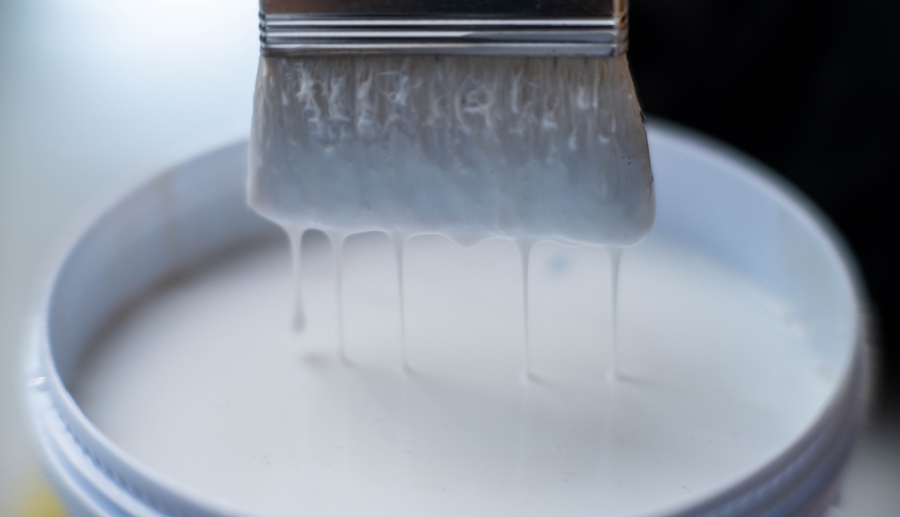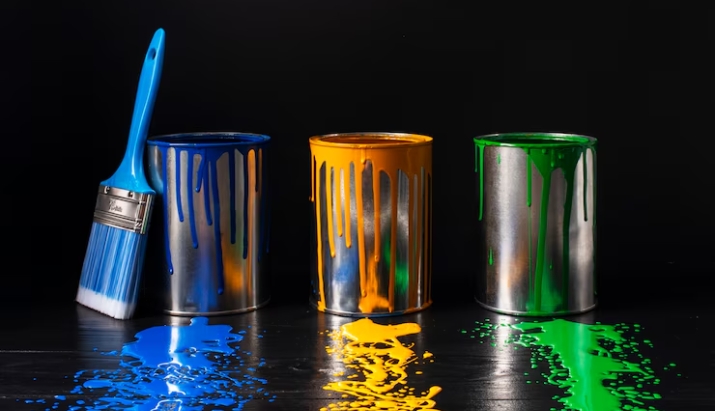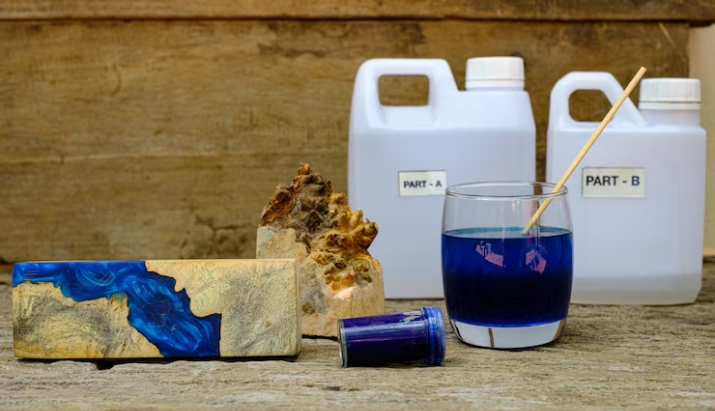
In the coatings industry, performance expectations have evolved far beyond just color and finish. Today, a coating must endure high foot traffic, frequent cleaning and exposure to moisture or microbial contaminants. Whether applied on residential walls, commercial flooring or exterior surfaces, the need for abrasion resistance and bio-shielding is more critical than ever. One of the key enablers of this dual functionality is the water-based acrylic emulsion-a versatile, environment-friendly resin system that enhances both physical and biological durability.
Products such as HICOAT-89, HICOAT-74 and HICOAT-106 from Tridev Resins showcase the tailored potential of water-based acrylic emulsions in real-world applications. In this article, we explore how these acrylic emulsion resins deliver superior wear resistance and protection against fungal and algal growth, making them ideal for a wide range of coatings
The Role of Acrylic Emulsions in Abrasion-Resistant Coatings
Why Abrasion Resistance Matters?
Abrasion resistance refers to a coating’s ability to withstand physical wear caused by friction, cleaning or regular use. In high-traffic zones-like commercial hallways, kitchen walls or industrial flooring-coatings need to maintain their integrity despite repeated surface contact.
How Water-Based Acrylic Emulsions Help?
Water-based acrylic emulsions contribute to abrasion resistance through:
- Cross-linked polymer structures that resist film breakdown
- High solid content that enables thicker, more durable layers
- Flexibility combined with hardness, which resists cracking under pressure

For example, HICOAT-106, with a solid content of around 45% and controlled viscosity, forms a tough film that resists scuffing and maintains its finish longer than standard coatings.
Key benefits include:
- Reduced maintenance and recoating frequency
- Cleaner appearance over time
- Enhanced durability for painted surfaces in commercial spaces
Abrasion-Resistance Mechanism
The abrasion resistance in acrylic copolymer emulsions or pure acrylic emulsions is governed by:
- Glass transition temperature: Higher Tg values increase hardness
- Molecular weight distribution: Affects film flexibility and toughness
- Polymer chain architecture: Influences cross-linking and film cohesion
Proper formulation ensures that the acrylic polymer emulsion adheres well to substrates, forms a uniform layer and retains elasticity to absorb micro-impacts. A balance between hardness and flexibility ensures that coatings do not become brittle over time.
How Water-Based Acrylic Emulsions Enhance Resistance to Fungi and Algae?
Biological Threats to Coatings
Surfaces in humid, coastal or shaded environments are prone to biological growth such as:
- Fungi
- Algae and moss
These organisms degrade the coating, affect aesthetics and in some cases, damage the substrate.
Acrylic Emulsions as Bio-Shielding Agents
Modern water-based acrylic resins can be engineered with anti-fungal and anti-algal additives or inherent resistance. For instance, HICOAT-89 includes biological shielding agents that form an inhospitable environment for microbial colonization.
Performance features:
- Long-term protection in exterior and interior environments
- Resistance to discoloration and odor caused by bio-growth
- Reduction in cleaning cycles and maintenance costs
The acrylic emulsion’s barrier property minimizes moisture ingress, a key trigger for biological growth. Tridev Resins’ emulsions are particularly suitable for wall coatings, concrete sealants and outdoor varnishes where biological defense is critical.

Comparing Key Grades: HICOAT-89, 74 and 106
| Product | Appearance | Viscosity @30°C (FCB4) | Solid Content (%) | Core Applications |
| HICOAT-89 | Light amber solution | 50–80 sec | 39–42 | Interior paints, anti-fungal coatings |
| HICOAT-74 | Off-white emulsion | 70–90 sec | 42–45 | Washable wall paints, outdoor finishes |
| HICOAT-106 | Off-white emulsion | 100–130 sec | 44–47 | High-traffic floor coatings, protective topcoats |
Each product offers different balances of flow properties, film build and biological resistance. For bio-shielding, HICOAT-89 excels, while abrasion-heavy environments benefit from HICOAT-106.
Applications in Residential, Commercial and Industrial Settings
Residential
- Bathroom and kitchen walls with mold prevention
- Durable children’s room paint with high wash ability
Commercial
- Hallways, corridors and lobbies with heavy foot traffic
- Offices with hygiene-sensitive requirements
Industrial

- Factory floors with machine traffic
- Exterior walls in coastal warehouses exposed to algae
By choosing the right acrylic emulsion resin, applicators can tailor coatings to meet the exact demands of any setting-combining performance, aesthetics and longevity
Factors to Consider in Selecting Water-Based Acrylic Resin Manufacturers
Not all acrylic emulsions are equal. When evaluating water-based acrylic resin manufacturers, consider:
- Technical data availability
- Customization support for formulation needs
- Application testing and certifications
- Competitive acrylic emulsion price with reliable supply
Conclusion
Water-based acrylic emulsions provide a reliable dual-function solution for coatings that require both abrasion resistance and biological shielding. Products like HICOAT-89 and HICOAT-106 are not only durable but also actively protect surfaces from environmental and biological wear-making them essential in modern coating technologies.
By understanding and leveraging the role of acrylic emulsion, formulators and applicators can enhance the life, appearance and performance of coatings across diverse applications. When sourced from reputable water based acrylic resin manufacturers, these emulsions offer unmatched value and functionality.
- Rosin Modified Phenolic Resins Applications in Sheet Fed, Web Offset & Lithographic Inks
- Water-Based Acrylic Emulsions Dual Protection: Abrasion Resistance and Bio-Shielding for Coatings
- Formulation Tips for Adhesion Promoter: Balancing Titanium Content and Viscosity in Flexo Ink Systems
- Tailored Phenolic Resin Viscosity: Enhancing Varnish and Low-Temperature Ink Performance
- How Polyamide Resins Enhance Corrosion Resistance and Structural Coating Performance?



